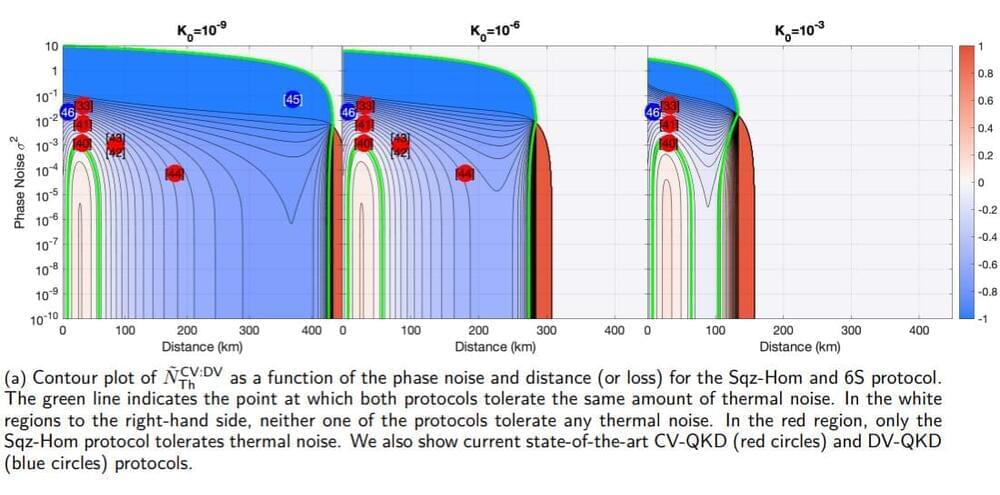What is Dark Energy? A mysterious substance that fills space and causes it to expand is Dark Energy .70% of the universe’s energy is in the form of ‘dark energy’
Get the latest international news and world events from around the world.

Scientists discover that people who live past 90 have key differences in their blood
Centenarians have become the fastest-growing demographic group in the world, with numbers approximately doubling every 10 years since the 1970s.
Many researchers have sought out the factors and contributors that determine a long and healthy life. The dissolution isn’t new either, with Plato and Aristotle writing about the ageing process over 2,300 years ago.
Understanding what is behind living a longer life involves unravelling the complex interplay of genetic predisposition and lifestyle factors and how they interact.
‘Space hairdryer’ regenerates heart tissue in study | BBC News
Gentle shockwaves can help regenerate heart tissue.
This Autonomous Solar-Powered Aircraft Will Fly for 90 Days Straight
face_with_colon_three year 2021.
The solar aircraft is made by a Spanish-American aerospace startup called Skydweller Aero. Based in Oklahoma City, the company raised $32 million in its Series A funding round, led by Italian aerospace firm Leonardo.
“For us, if you’re flying 90 days with one aircraft, that’s two takeoffs and landings versus … hundreds,” Skydweller Aero co-founder John Parkes told Aviation Today. “Being able to fly thousands of miles, persist over an area for 30–60 days and fly back is a differentiator. It’s a huge cost savings to the US government when you look at the whole cost of doing a lot of the national security missions that we have.”
The plane will stay airborne thanks to 2,900 square feet of photovoltaic cells that will blanket its surface, generating up to 2 kilowatts of electricity. As a backup in case it’s cloudy for a few days in a row, the plane will also be equipped with hydrogen fuel cells (maybe they’re not as “extremely silly” as Elon Musk thinks).

Comparison of Discrete Variable and Continuous Variable Quantum Key Distribution Protocols with Phase Noise in the Thermal-Loss Channel
Sebastian P. Kish1,2, Patrick J. Gleeson2, Angus Walsh2, Ping Koy Lam3,2, and Syed M. Assad3,2
1Data61, CSIRO, Marsfield, NSW, Australia. 2 Centre of Excellence for Quantum Computation and Communication Technology, Department of Quantum Science and Technology, Research School of Physics, The Australian National University, Canberra, ACT, Australia. 3 Institute of Materials Research and Engineering, Agency for Science, Technology and Research (A*STAR), Singapore, 138,634, Singapore.
Get full text pdfRead on arXiv VanityComment on Fermat’s library.

To solve global water scarcity, we need to get more serious about desalination
Earth’s H2O is 97 percent seawater, and most of the remaining 3 percent is inaccessible, frozen in glaciers or permafrost. Only a small portion, about half of a percent, exists as freshwater in aquifers and rivers that humans can tap into. A process called, however, allows us to dip into the oceans to satisfy our thirst.
Desal has been around for decades and is used to make both seawater and salty groundwater drinkable. But scientists think that it will become increasingly important in a warmer, drier future. In a recent UN-led review, researchers stated that “‘conventional’ sources of water such as rainfall, snowmelt and river runoff captured in lakes, rivers, and aquifers are no longer sufficient to meet human demands in water-scarce areas.”
During a media roundtable at the 2019 American Geophysical Union conference, Peter Fiske, director of the Water-Energy Resilience Research Institute at Lawrence Berkeley National Laboratory, discussed why we might need to more strongly consider this technology—at times written off for its high costs and energy use—to stabilize water supplies in the future. Here’s what you need to know.
Infinite Resources: Develop the arctic, green hydrogen, fresh water and healthy food for the world
Discussion with Jeff Krehmer about his book Infinite Resources: How to sustainably develop the arctic, by supplying green hydrogen, fresh water and healthy food to the world, while mitigating the negative effects of anthropocentric climate change.
Links related to Infinite Resources:
The book Infinite Resources:
https://www.amazon.com/Infinite-Resou?tag=lifeboatfound-20…
Moon-shots program incubator:
https://foresightcac.com/earthtech205…
Engage Jeff Krehmer:
www.linkedin.com/in/jeff-krehmer/
Links:
Quora blog: https://spacefaringcivilization.quora…
Amazon Author page: http://amazon.com/author/ronfriedman.
My Website: https://ronsfriedman.wordpress.com/
How to support the channel:

‘Awakening’ of a black hole witnessed for the first time
In late 2019, the previously unremarkable galaxy SDSS1335+0728 unexpectedly brightened, prompting astronomers to investigate the cause using data from various observatories, including the European Southern Observatory’s Very Large Telescope (ESO’s VLT).
The study, recently published in the journal Astronomy & Astrophysics, suggests an unprecedented event: the sudden awakening of the massive black hole at the galaxy’s core.
“Imagine you’ve been observing a distant galaxy for years, and it always seemed calm and inactive,” said Paula Sánchez Sáez, an astronomer at ESO.

Webb travels back in time to better understand supernovae
The cosmos has always fascinated scientists, and NASA’s James Webb Space Telescope (JWST) is now offering unprecedented views of supernovae from the early universe.
Recently, a team of researchers used Webb’s data to identify ten times more supernovae than were previously known, uncovering some of the most distant examples ever observed.
These findings, presented at the 244th meeting of the American Astronomical Society in Madison, Wisconsin, are revolutionizing our understanding of the universe’s expansion.

Eating More Fruits and Vegetables may Lead to Optimal Sleep Duration
Good health depends on a healthy diet and sufficient exercise and sleep. There are clear associations among these components; for example, good nutrition provides energy for exercise, and many people report that getting enough exercise is important to their ability to get enough sleep. So how might nutrition affect sleep?
A new study looks at the connection between fruit and vegetable intake and sleep duration. The research, by a team from Finland’s University of Helsinki, National Institute for Health and Welfare, and Turku University of Applied Sciences, is published in Frontiers in Nutrition.
Why sleep is important and how it works Sleep gives our bodies the chance to rest and recover from wakeful activity. Our hearts, blood vessels, muscles, cells, immune systems, cognitive abilities, and memory-making abilities depend on regular, healthy sleep for optimal functioning, and a 2019 study suggests that sleep is important for repairing DNA damage that occurs during wakefulness.